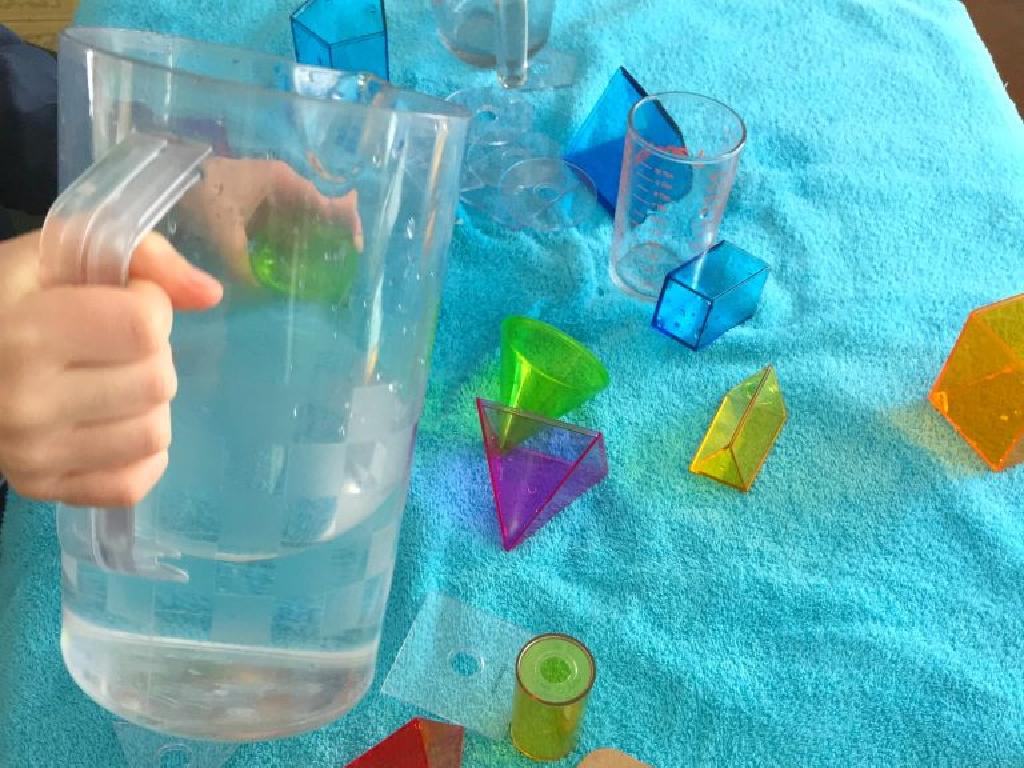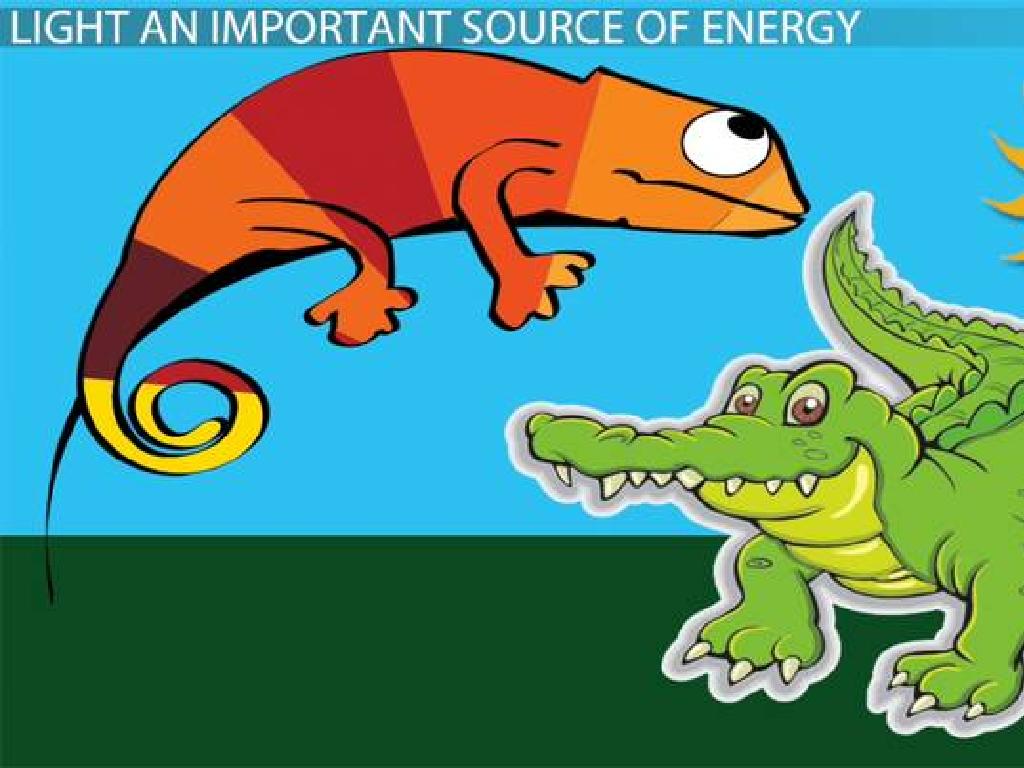Identify Mammals, Birds, Fish, Reptiles, And Amphibians
Subject: Science
Grade: Fifth grade
Topic: Classification
Please LOG IN to download the presentation. Access is available to registered users only.
View More Content
Welcome to Animal Classification!
– Learn about animal classes
– Characteristics of mammals
– Mammals have fur or hair and produce milk for their young.
– Features of birds, fish, reptiles, amphibians
– Birds have feathers and lay eggs. Fish breathe underwater with gills. Reptiles have scales and lay eggs. Amphibians live on land and water.
– Importance of animal classification
– Helps us understand how animals are related and interact with each other.
|
In today’s lesson, we’ll explore the five main classes of animals. Students will learn to identify mammals by their fur and maternal care, birds by their feathers and nests, fish by their gills and aquatic life, reptiles by their scales and cold-blooded nature, and amphibians by their dual life on land and water. Understanding these characteristics helps us to classify animals, which is crucial for studying their behavior, habitat, and how they relate to other species. Encourage students to think of examples for each class and discuss why knowing these classifications is beneficial for scientists and our environment.
Exploring Animal Classification
– What is classification?
– It’s how we group animals based on similarities
– Five classes of animals
– Mammals, birds, fish, reptiles, amphibians
– Classification criteria
– Physical features, behaviors, genetics
– Significance of classification
|
Classification is a system used by scientists to organize living things. This system helps us understand the relationships between different animals and predict how they might behave. By focusing on mammals, birds, fish, reptiles, and amphibians, we can explore the diverse characteristics that define each class. Physical features might include things like fur or feathers, behaviors could be migration or hibernation patterns, and genetic information refers to DNA similarities. Understanding classification is crucial for studying biology and ecology, as it provides a framework for identifying and discussing the vast array of life on Earth.
Characteristics of Mammals
– Mammals have fur or hair
– Like humans, dogs, or cats
– Produce milk for their young
– Mothers feed their babies with milk
– Warm-blooded creatures
– They can regulate their body temperature
– Most give birth to live young
– Unlike eggs, babies are born alive
|
This slide introduces students to the unique characteristics that define mammals. Discuss the presence of fur or hair as a common trait, and explain that mammals produce milk through mammary glands to feed their young, which is a key distinguishing feature. Highlight that being warm-blooded means mammals can maintain a stable body temperature, unlike cold-blooded animals whose body temperature changes with the environment. Also, emphasize that while most mammals give birth to live young, there are exceptions like the platypus and echidna, which lay eggs. Use examples like humans, whales, and bats to illustrate the diversity within the mammal class. Encourage students to think of other mammals and how these characteristics apply to them.
Characteristics of Birds
– Birds have feathers and wings
– Feathers for flight and warmth, wings for flying
– Birds lay eggs, warm-blooded
– Eggs hatch into chicks, body temp regulated
– Examples: Robins, eagles, penguins
– Robins: common backyard birds, Eagles: strong hunters, Penguins: flightless, cold climate birds
|
This slide aims to teach students about the unique characteristics that define birds. Discuss the function of feathers not only for flight but also for insulation. Explain that being warm-blooded means birds can maintain their body temperature. Use examples like robins, which many students may see in their own backyards, eagles as an example of power and hunting skill, and penguins as a unique bird adapted to cold environments. Encourage students to think of other birds and how these characteristics apply. This will help them understand how birds are classified in the animal kingdom.
Characteristics of Fish
– Fish habitat and respiration
– Fish live in water and use gills to breathe.
– Fish body features
– They are covered in scales for protection.
– Fish reproduction
– Most fish lay eggs, known as spawning.
– Examples of fish
– Salmon, clownfish, and sharks are all fish.
|
This slide aims to educate fifth-grade students on the basic characteristics that define fish within the animal classification system. Emphasize that fish are aquatic creatures that breathe through gills, a feature unique to them compared to other animals like mammals or birds. Discuss the function of scales and how they help fish in their watery environment. Explain the concept of laying eggs and how it differs from the birth process in mammals. Use the examples provided to help students visualize different types of fish and understand the diversity within this category. Encourage students to think of other examples of fish and consider their habitats, body structures, and life cycles.
Exploring Reptiles: Unique Characteristics
– Reptiles have scaly skin
– Their skin helps them live in dry habitats
– They lay eggs on land
– Unlike mammals, reptiles’ eggs are not nurtured inside their bodies
– Most reptiles are cold-blooded
– ‘Cold-blooded’ means their body temperature changes with the environment
– Reptiles live on land or water
– Some reptiles, like turtles, can live in both environments
|
This slide introduces students to the characteristics that define reptiles within the animal kingdom. Emphasize that reptiles’ dry, scaly skin is an adaptation to their habitats, which can often be arid. Discuss how reptiles lay eggs with leathery shells on land, a significant difference from amphibians that lay eggs in water. Explain the concept of being cold-blooded and how it affects reptiles’ activity levels and habitats. Provide examples of reptiles such as turtles, snakes, and lizards, and note their ability to live in diverse environments. Encourage students to think of other reptiles and how these characteristics apply to them.
Characteristics of Amphibians
– Amphibians’ life cycle
– Start in water, then move to land
– Amphibians have moist skin
– Their skin absorbs water and needs to stay wet
– Amphibians are cold-blooded
– Their body temperature changes with the environment
– Examples of amphibians
– Frogs, toads, and salamanders are common amphibians
|
This slide aims to teach students about the unique characteristics of amphibians. It’s important to highlight that amphibians have a distinct life cycle that begins in water, where they hatch from eggs into larvae (like tadpoles), and then typically transition to living on land as they mature into adults. Their moist skin is a key adaptation for their life in water and on land, and it distinguishes them from reptiles, which have dry, scaly skin. Being cold-blooded means that amphibians cannot regulate their body temperature internally and depend on the environment to warm up or cool down. Provide examples like frogs, toads, and salamanders to help students identify common amphibians they may encounter or learn about. Encourage students to think about local amphibians and to consider how their characteristics help them survive in their habitats.
Classifying Animals Together
– Practice animal classification
– Observe pictures, determine class
– Look at animal images and use what we know to classify them
– Recall characteristics of each class
– Remember: Mammals have fur, birds have feathers…
– Engage in group discussion
|
This slide is meant to be interactive and engaging for the students. Begin by showing pictures of various animals one by one and ask the students to classify them as mammals, birds, fish, reptiles, or amphibians based on the characteristics they’ve learned. Remind them of key traits such as mammals having fur or hair and being warm-blooded, birds having feathers and laying eggs, fish having scales and living in water, reptiles being cold-blooded with scaly skin, and amphibians living both on land and in water. Encourage group discussion and participation to ensure that every student is involved in the learning process. This activity will help reinforce their understanding of animal classification and the diversity of life forms.
Class Activity: Animal Classification Game
– Break into small groups
– Receive a set of animal cards
– Classify animals into groups
– Mammals, birds, fish, reptiles, amphibians
– Discuss your classifications
– Share reasons for your choices
|
This interactive class activity is designed to help students apply their knowledge of animal classification in a fun and engaging way. Divide the class into small groups to encourage teamwork. Each group will be given a set of animal cards, and their task is to sort these animals into the correct categories: mammals, birds, fish, reptiles, and amphibians. After the classification, each group will discuss their choices and reasoning with the class. This will not only reinforce their understanding of the characteristics that define each animal group but also develop their communication skills. Possible variations of the activity could include sorting based on habitats, diet, or other criteria related to animal classification.
Animal Classification: Homework Challenge
– Review of today’s classification
– Homework: Find animal examples
– Look for a mammal, bird, fish, reptile, and amphibian around you
– Draw or photograph your findings
– Use drawings or photos to document
– Write an interesting fact for each
– Discover and note down one fact about each animal
|
Today’s class focused on the classification of animals into mammals, birds, fish, reptiles, and amphibians. For homework, students are tasked with finding a local example of each type of animal. They can either draw or take a picture of the animal and should write down one interesting fact about each one. This activity will help reinforce the day’s lesson and encourage observational skills. In the next class, students can share their findings, which will foster a discussion about the diversity of animal life in their own community. Make sure to remind students to be safe and respectful of animals and their habitats while observing.






